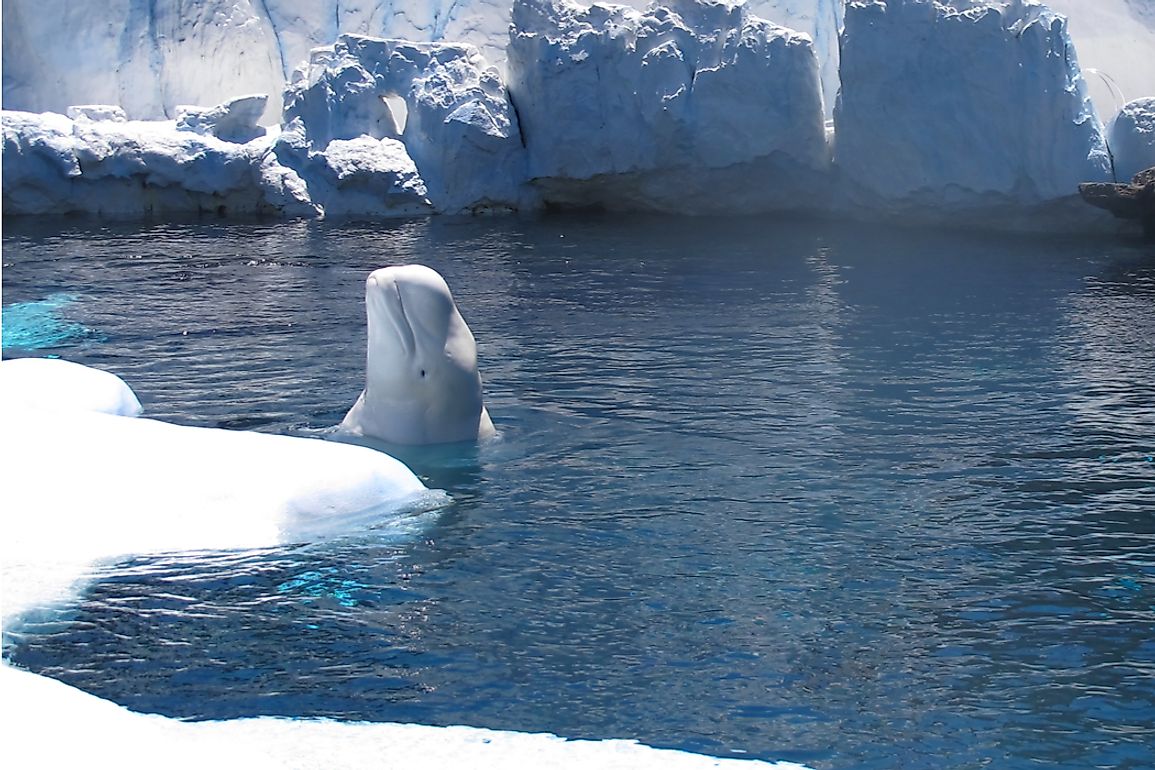Where Do Beluga Whales Live?

The beluga whale is an aquatic mammal that lives in the Arctic and sub-Arctic. Also known as the white whale because of its white skin, the name "beluga" is derived from the Russian word for "white."
Physical Characteristics
Beluga whales are easily identifiable by their white color and the round bump on their forehead, known as a melon. The melon is an echolocation organ that helps the beluga whale communicate through sounds. The beluga is among the smallest whale species, and an adult male will grow to between 13 and 20 feet in length and between 2,000 to 3,000 lbs in weight. Females are slightly smaller in size than males. Forty percent of a beluga’s body consists of blubber that stores energy and keeps them warm, and their heads are round with necks narrower than other whales. A beluga's head can move head side to side because its neck vertebrae are not fused like other whales. A beluga whale also has a small beak, lacks a dorsal fin, and has short flippers.
Habitat and Distribution
Beluga whales are widely distributed in the Arctic and sub-Arctic waters. During summer months they can be found off the coast of the US state of Alaska, western Greenland, northern Russia, and northern Canada. Belugas can adapt to a varied range of habitats but prefer shallow waters along the coast. However, they migrate to deeper water to feed and give birth. While in coastal regions, belugas prefer canals, bays, fjords, coves, and the shallow water of the Arctic Ocean that is continuously in sunlight. In the first few months of summer, the beluga whales can be found in large numbers in the mudflats of Alaska's Cook Island. Females and their young can also be found in the open waters of eastern Beaufort Sea, while adult males prefer the waters of the Canadian Arctic Archipelago. The choice of habitats during the summer is influenced by feeding habits, predators, and reproduction.
Migration
Beluga whales are seasonal migrators, and some travel up to 4,000 miles annually in search of food, mates, and conducive waters. Young belugas accompany the adults, and migration patterns are passed from one generation to the next. When ice covers their summer habitats, beluga whales migrate to the open sea for the winter. However, after the ice sheet melts, they migrate back to shallow waters off the coastline. Beluga whales do not shy away from rivers and have been observed miles inland from the ocean on several occasions. The Yukon River (Canada/US), Yenisei (Asia), St. Lawrence (Canada), and Kuskokwim (Alaska) are some of the rivers known to be traversed by beluga whales. Some beluga whale populations do not migrate but instead spend their time in a well-defined area. The population in the Cook Inlet, Cumberland Sound, and the estuary of the St. Lawrence River migrate upstream during the summer and move back to deeper sections of water during the winter without entirely leaving their habitat.











